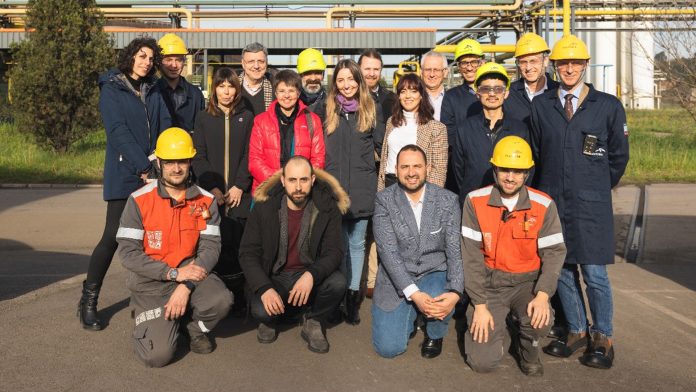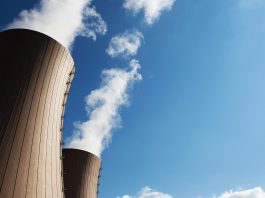The CEM-WAVE Project is developing high-performing composite materials by applying novel technologies and integrating renewable energies to lead the shift of cleaner manufacturing in heavy industry.
The CEM-WAVE project addresses Europe’s need for advanced composite materials that can withstand harsh conditions. It will facilitate the transition to renewable energy while ensuring high efficiency.
In this framework, Ceramic Matrix Composites (CMCs) represent one of the latest and most promising solutions due to their high toughness, low density, high thermal stress resistance and chemical inertness. Due to the high raw materials and processing costs, CMCs are currently employed only in niche areas.
Therefore, in CEM-WAVE, our first aim is to introduce to European industries an innovative CMC production process based on Microwave-assisted Chemical Vapour Infiltration (MW-CVI) technologies, making CMC application sustainable for process industries in energy-intensive sectors such as steelmaking.
The final goal will be to test a CMC tubular-shaped prototype to be applied in future relevant environments characterised by fuel mixtures with increasing hydrogen contents for their application in radiant tube furnaces in steelmaking industries.
The CEM-WAVE consortium
The CEM-WAVE consortium is comprised of 13 partners from academia and industry, and brings together European expertise in various fields that are crucial for the project’s success. These include:
- Flexible ceramic fibre coating and preforms manufacturing routes.
- Developing rapid and simplified joining technologies for complex CMC components production.
- Upgrading the MW-CVI process with the latest MW Solid-State Generators (SSGs) to finely adjust the MW heating parameters and automate the technology.
- Characterising the thermo-mechanical and corrosion resistance of CMCs in relevant environments.
- Numerical modelling of the MW-CVI process for optimising processing parameters and scale-up.
Recent developments in composite materials
As the 48-month CEM WAVE project nears completion, numerous challenges have been tackled to enable efficient composite material application. A first crucial step dealt with the development of CMC preforms reinforced by uniformly coated oxide and non-oxide ceramic fibres displaying suitable levels of open porosity for the subsequent matrix infiltration by a MW-CVI process at the University of Pisa (UNIPI) and the University of Birmingham (UoB).
In this first step, Fraunhofer ISC (FHF) developed CMC tubular preforms using the wet-filament winding technique. A highly reproducible and cost-efficient process was demonstrated, with a high potential for further scale-up.
Archer Technicoat Ltd (ATL) developed the previous design and installation of novel upgrades to the existing SiC-based MW-CVI systems at both UNIPI and UoB. These upgrades enhanced the deposition of pyrolytic carbon interphases for SiCf/SiC CMCs at UNIPI and a novel MW-CVI setup at UoB for the deposition of a range of matrix materials for oxide CMCs, including alumina (Al2O3) and zirconia (ZrO2).
This was a challenge for UoB since oxide-based CMCs have rarely been made before by the MW-CVI technique due to the MW transparent properties of Al2O3 at room temperature. The issue is being resolved by applying a MW absorbing carbon coating, which allows the fibre preforms to be heated to around 600°C.
An SSG was used to provide much greater control over the operating frequency and improve the MW heating efficiency. Whilst we have achieved the deposition of a high-purity Al2O3 matrix onto the Al2O3 fibre preform, further work is still needed to obtain high-density crystallised oxide/oxide CMCs.
UNIPI’s upgrade of the MW-CVI process also required transitioning to MW SSGs for fast and precise operating frequency tuning during the CMC infiltration. Fricke und Mallah (FM) developed an innovative 2kW x 3MW SSGs system, fully tuneable in the 2.4-2.5 GHz ISM frequency band, which overcame several commercial device limitations.
Initially, the frequency tuning was guided by rigorous numerical modelling of the coupled electromagnetic(EM)-thermal problem conducted by the Institute for Chemical and Physical Processes (IPCF-CNR). IRIS PatBox software was then customised to automatically control the CMC sample temperature profile by adjusting the three SSGs’ operating frequency and MW power.
A Multiport-Multifrequency approach was then developed and tested on 10x10x0.3cm³ SiCf/SiC samples to tailor the CMC temperature profile, leveraging the inside-out densification mechanism of the MW-CVI process, whose results will be published in a forthcoming paper. Future tests will focus on MW-CVI trials with tubular-shaped SiCf/SiC samples having a diameter and a height of about 10cm with a wall thickness of 0.3cm.
CEM-WAVE further project activities
Project activities were complemented by multi-scale multiphysics image-based modelling of the MW-CVI process to optimise infiltration time, material quality, and energy consumption. In this framework, a crucial step concerned the accurate determination of the CMC’s thermo-mechanical and high-temperature dielectric properties at relevant operating conditions, which demands complex procedures and high-level equipment.
Specifically, the MW energy absorption characteristics of the CMC samples, crucial to determine the EM performance of the MW-CVI reactors throughout the whole process, have been characterised by measuring the dielectric properties at 2.45 GHz up to 1,000°C using a dedicated measurement system available at IPCF-CNR’s premises.
ENEA is researching the thermomechanical characteristics of oxide and non-oxide CMCs and joining material candidates in association with the water corrosion tests, with and without Environmental Barrier Coatings (EBCs). Indeed, in post-combustion environments, the water corrosion process might progressively compromise the CMC mechanical characteristics.
To prevent this, FHF and ATL developed suitable EBCs, and several accelerated ageing tests were performed to assess reliable performances in terms of creep and tensile and flexural strength properties evolution. In parallel, abrasion resistance measures were also performed, while Certimac (ENEA) focused on the thermophysical characteristics of coated and uncoated CMCs.
Moreover, CNRS proposed developing a 3D-printable ceramic insert to enhance thermal transfer in the final section of radiant tubes, leveraging CNRS-LCTS expertise in coupled radiative/conductive heat transfer in porous media. The original design, adapting various geometrical parameters, aimed to optimise the heat transfer efficiency at high temperatures, including radiative heat transfer.
Overcoming challenges such as high computer memory and CPU requirements, optimisation was achieved through a combination of modelling tools, ensuring 3D printability was another hurdle successfully addressed after confirming numerically that the design improved heat transfer efficiency and a half-scale Al2O3 prototype was printed.
Manufacturing net-shape ceramic components for advanced design solutions necessitates large, complex parts that can withstand harsh operating conditions. Innovative glass-ceramic solutions were developed at POLITO using pressure-less joining technologies to address this. Yttrium aluminosilicate (YAS) glass ceramics were successfully utilised to join SiCf/SiC CMCs.
Additionally, two glass-ceramic systems, with Y2Ti2O7 as their main crystalline phase, were developed for joining A2O3f /Al2O3-ZrO2 oxide-based CMCs. Results from both activities were recently published in the Journal of the European Ceramic Society.
The end of the CEM-WAVE project
The CEM WAVE project ends in month 48, and the final conference will be celebrated in Pisa.
Upcoming challenges will mainly involve validating the CMC tube prototypes in a specialised pilot-scale furnace developed as part of the project by Arcelor Mittal (AMIII) to evaluate their performance for steelmaking applications. Adapting from industrial to pilot-scale has been a significant hurdle, requiring redesign and the creation of a new demonstrator for testing the CMC tubes.
In the remaining months, FHF will continue their work on highly densified and coated oxide and non-oxide-based CMC prototype tubes to be investigated in the aforementioned furnace.
The expected outcome includes the potential implementation of the concept in next-generation radiant tubes, presenting challenges in upscaling the size and quantity of parts, which the team is eager to address. AMIII will offer vital feedback, particularly for other energy-intensive applications undergoing a transition to renewable fuel mixtures.
At the same time, post-mortem analysis of the tested CMC tubular samples will provide essential performance data and useful insights for further optimisation of each manufacturing step.
 This project has received funding from the European Union’s Horizon 2020 research and innovation programme under grant agreement No 958170.
This project has received funding from the European Union’s Horizon 2020 research and innovation programme under grant agreement No 958170.
The content of this document reflects only its authors’ view and the European Commission is not responsible for any use that may be made of the information it contains.
Please note, this article will also appear in the 18th edition of our quarterly publication.









